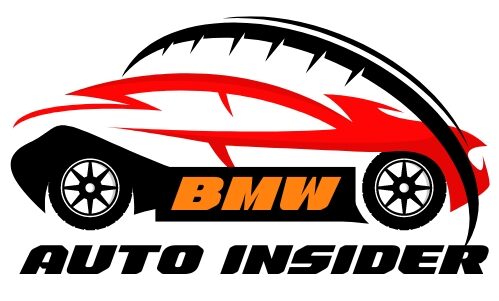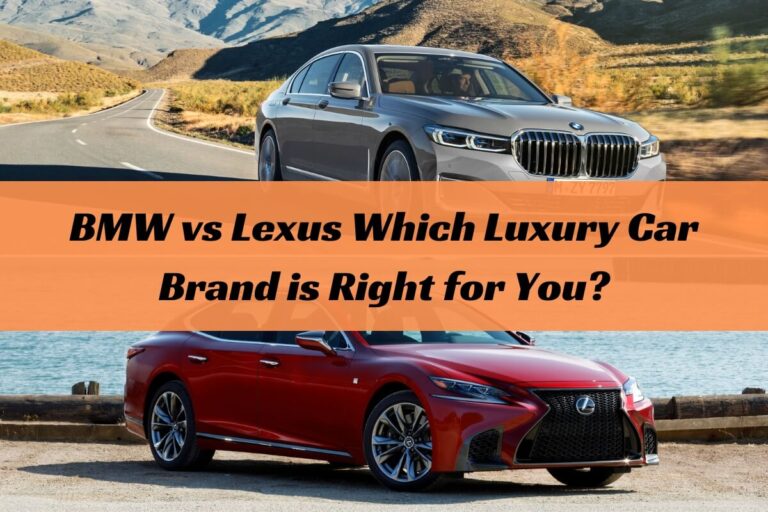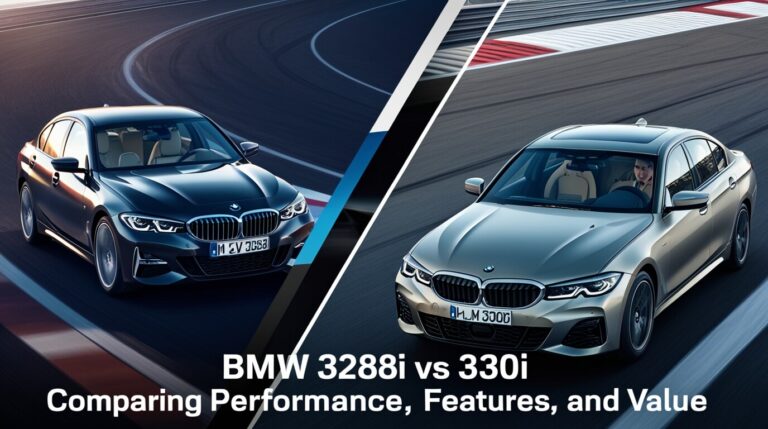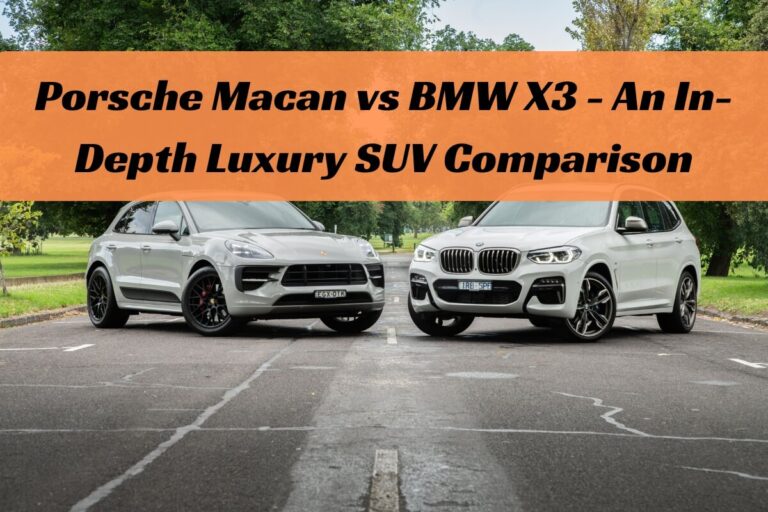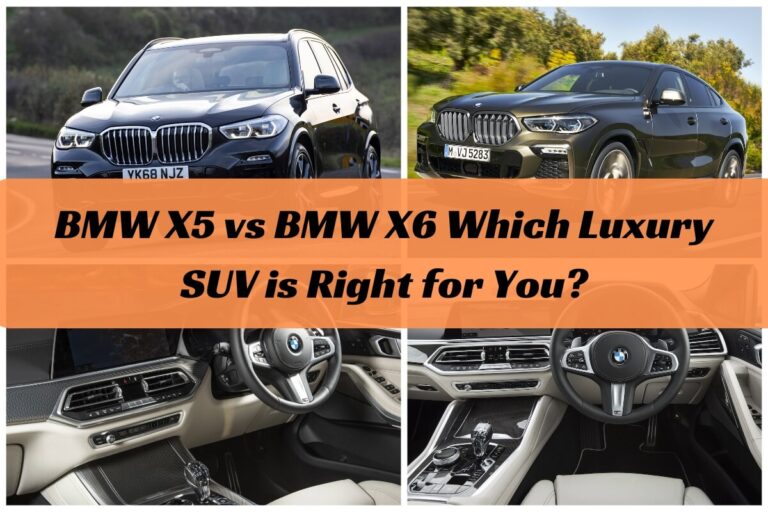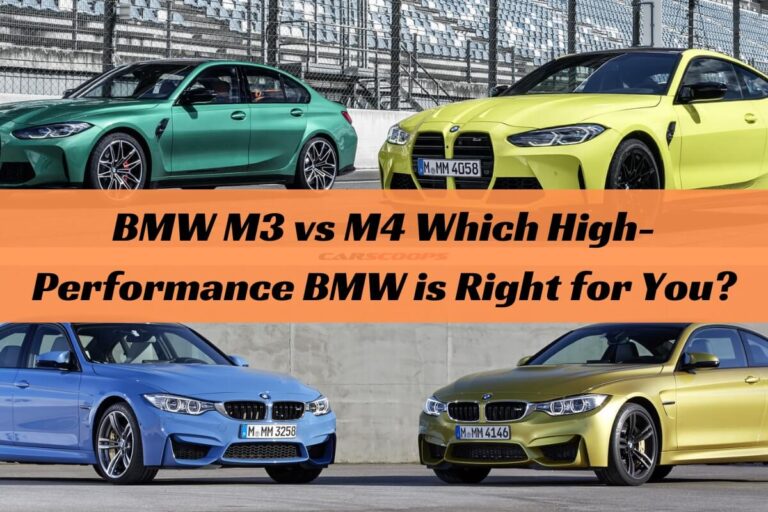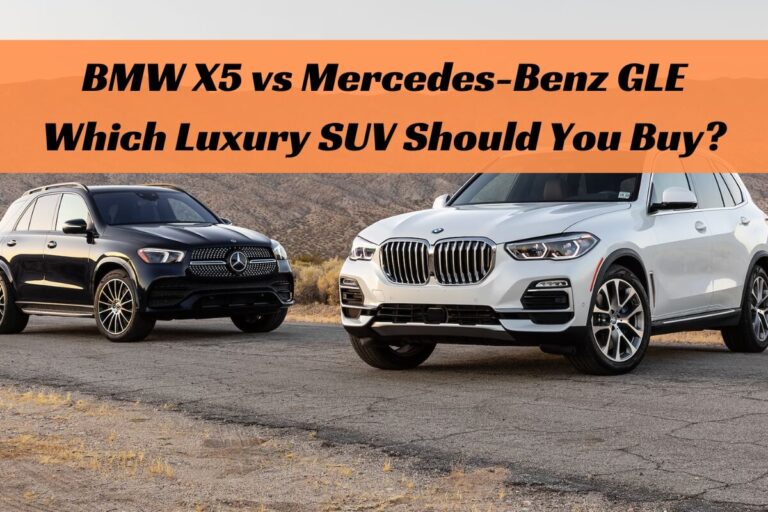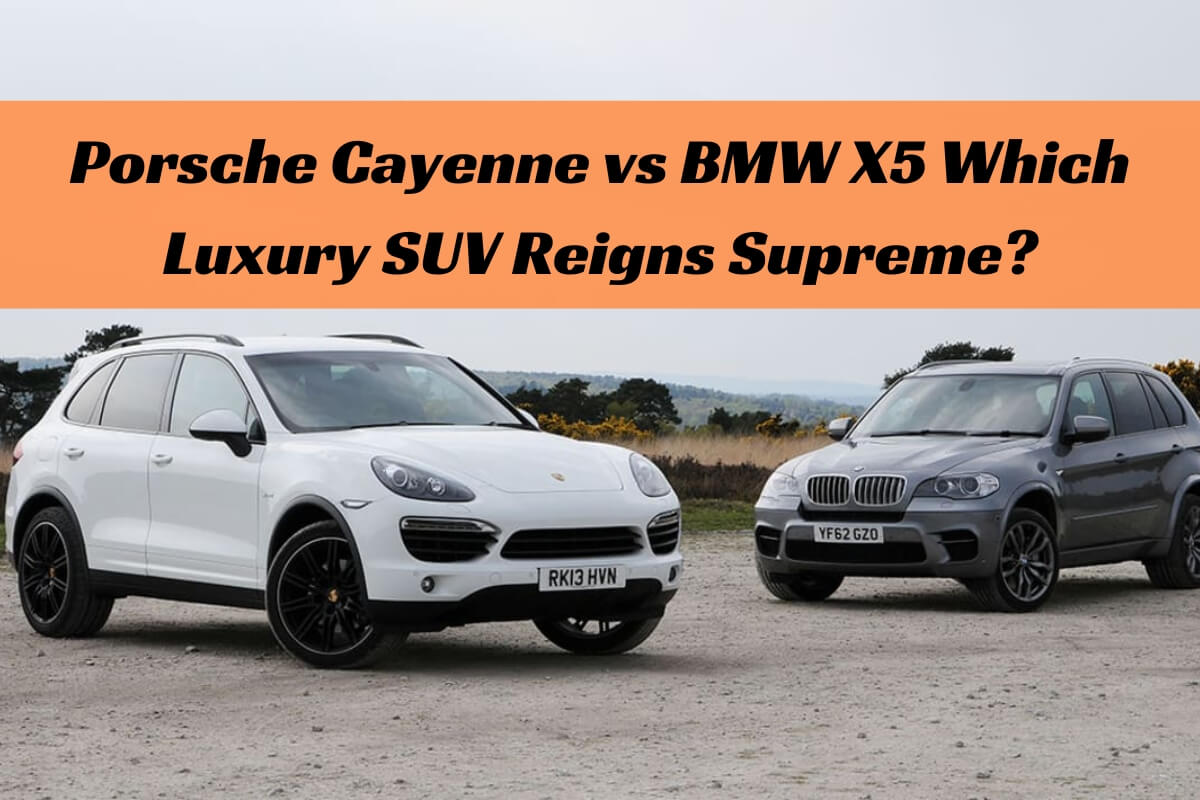
In the world of premium SUVs, the Porsche Cayenne and BMW X5 stand tall as two of the most sought-after models. These high-performance behemoths blend luxury, power, and cutting-edge technology into sleek, family-friendly packages. However, with their respective strengths and unique characteristics, choosing between them can be a daunting task.
So, which one should you go for – the Porsche Cayenne or the BMW X5? Both are exceptional luxury SUVs, but the Cayenne edges out the X5 with its superior performance and driving dynamics, while the X5 offers a more spacious and comfortable interior along with a slightly lower price point.
In this comprehensive comparison, we’ll dive deep into the design, performance, interior space, technology, safety features, and overall value proposition of these two automotive giants. By the end, you’ll have a clear understanding of which SUV best aligns with your priorities and lifestyle needs.
Design and Styling
When it comes to exterior design, the Porsche Cayenne and BMW X5 take distinctly different approaches. The Cayenne flaunts a sleek, coupe-like silhouette with a long hood and sloping roofline, exuding a sportier and more aggressive stance. In contrast, the X5 embraces a more traditional, boxy SUV shape, blending rugged appeal with elegant styling cues.
Step inside, and you’ll immediately notice the Cayenne’s driver-focused interior. The dashboard and center console wrap around the driver, creating a cockpit-like environment reminiscent of Porsche’s sports cars. High-quality materials, such as leather and aluminum accents, adorn the cabin, giving it a premium and purposeful feel.
The BMW X5, on the other hand, prioritizes luxury and comfort over outright sportiness. Its interior design is more understated yet elegant, with a focus on creating a serene and upscale ambiance. Premium materials, like soft-touch surfaces and real wood trim, contribute to the X5’s refined cabin experience.
Both SUVs come loaded with the latest technology and convenience features, including large touchscreen displays, premium sound systems, and advanced driver assistance systems. However, the Cayenne’s infotainment system stands out for its intuitive layout and user-friendly controls.
Performance and Driving Dynamics
Under the hood, both the Porsche Cayenne and BMW X5 offer a range of powerful engine options, including plug-in hybrid variants for those seeking a balance between performance and efficiency.
The Cayenne’s lineup starts with a punchy 3.0-liter V6 engine, but true performance enthusiasts will gravitate toward the potent twin-turbo V8 models, which can churn out up to 670 horsepower in the range-topping Cayenne Turbo GT. Regardless of the engine choice, the Cayenne delivers blistering acceleration and a thrilling driving experience that belies its size and weight.
The BMW X5, while no slouch in the performance department, takes a more well-rounded approach. Its engine lineup includes a turbocharged inline-six and a twin-turbo V8, with the latter found in the high-performance X5 M models. However, even the base X5 offers ample power and a smooth, refined driving experience that prioritizes comfort over outright thrills.
When it comes to handling and driving dynamics, the Porsche Cayenne truly shines. Its exceptional chassis tuning, precise steering, and well-sorted suspension system endow it with sports car-like agility and composure, making it an absolute joy to drive on winding roads. The BMW X5, while no slouch in the corners, can’t quite match the Cayenne’s razor-sharp reflexes and communicative steering feel.
Both SUVs offer adjustable air suspension systems and various driving modes to tailor the ride and handling characteristics to your preferences. However, the Cayenne’s suspension is slightly firmer, even in its most comfortable setting, reflecting its performance-oriented nature.
Fuel Economy and Efficiency
In the realm of fuel efficiency, both the Porsche Cayenne and BMW X5 offer plug-in hybrid (PHEV) variants that aim to strike a balance between power and eco-friendliness.
The Cayenne E-Hybrid pairs a 3.0-liter V6 engine with an electric motor and a 17.9 kWh battery pack, delivering a combined output of 455 horsepower and an EPA-estimated all-electric range of up to 17 miles. In hybrid mode, the Cayenne E-Hybrid returns an impressive 21 mpg combined.
The BMW X5 xDrive45e, on the other hand, features a turbocharged 3.0-liter inline-six engine paired with an electric motor and a larger 24 kWh battery pack. This setup produces a combined 389 horsepower and boasts an EPA-estimated all-electric range of up to 30 miles. In hybrid mode, the X5 xDrive45e achieves an EPA-rated 23 mpg combined.
While both SUVs offer respectable fuel economy figures for their size and performance, the BMW X5 xDrive45e takes the lead with its longer all-electric range and slightly better combined fuel economy rating. However, it’s important to note that real-world fuel efficiency can vary significantly based on driving habits and conditions.
Interior Space and Practicality
When it comes to interior space and practicality, the BMW X5 holds a slight advantage over the Porsche Cayenne.
The X5 offers ample room for up to five passengers, with generous head- and legroom in both the front and rear seats. Its boxy exterior dimensions translate into a spacious and airy cabin, making it an ideal choice for families or those who frequently carry passengers and cargo.
In contrast, the Cayenne’s sloping roofline and sportier design result in slightly less rear headroom, which may be a concern for taller passengers. However, it still offers a respectable amount of interior space, and its rear seats can comfortably accommodate two adults or three children.
Both SUVs feature versatile cargo areas, but the X5 edges out the Cayenne in overall cargo capacity. With the rear seats folded, the X5 offers a cavernous 72.3 cubic feet of cargo space, while the Cayenne provides a still-generous 60.3 cubic feet.
When it comes to interior storage and convenience features, both vehicles are well-equipped with ample cup holders, door pockets, and small-item storage compartments. However, the X5’s slightly larger cabin translates into more overall interior storage space for personal items.
Technology and Safety Features
In the realm of technology and safety, the Porsche Cayenne and BMW X5 are both well-equipped with the latest features and advanced driver assistance systems.
Both SUVs come standard with large touchscreen infotainment systems, offering seamless integration with Apple CarPlay and Android Auto, as well as intuitive voice control capabilities. However, the Cayenne’s infotainment system is widely regarded as more user-friendly and responsive, with a sleeker interface and more intuitive menu navigation.
When it comes to advanced safety features, both vehicles offer a comprehensive suite of driver assistance technologies, including forward collision warning, automatic emergency braking, lane departure warning, and blind-spot monitoring. However, the X5 takes the lead with its optional Extended Traffic Jam Assistant, which enables semi-autonomous driving in stop-and-go traffic situations.
In terms of safety ratings, both the Porsche Cayenne and BMW X5 have earned top marks from the National Highway Traffic Safety Administration (NHTSA) and the Insurance Institute for Highway Safety (IIHS), solidifying their reputations as two of the safest SUVs on the market.
Price and Value Proposition
Pricing is often a critical factor when considering premium SUVs like the Porsche Cayenne and BMW X5. While both vehicles command a premium price tag, the X5 holds a slight advantage in terms of overall value.
The base BMW X5 sDrive40i starts at around $60,000, while the entry-level Porsche Cayenne kicks off at around $70,000. As you move up the trim levels and add optional packages, the prices can quickly escalate, with the top-tier Cayenne Turbo GT commanding a staggering $180,000 price tag.
It’s important to note that both vehicles offer a wide range of trim levels and powertrain options, allowing buyers to tailor their purchase to their specific needs and budget. However, when it comes to overall value, the BMW X5 tends to offer more bang for your buck, especially when you consider its slightly lower starting price and impressive list of standard features.
That said, the Porsche Cayenne’s higher price tag can be justified by its superior performance capabilities, more engaging driving dynamics
and the prestige associated with the Porsche brand. Ultimately, the decision between the two will come down to whether you prioritize outright performance and driving thrills or a more well-rounded luxury experience at a lower price point.
FAQs about the Porsche Cayenne and BMW X5
What are the key differences between the two SUVs?
The primary differences lie in their design philosophies and driving characteristics. The Porsche Cayenne has a sportier, more aggressive design and focuses on delivering an exhilarating driving experience. In contrast, the BMW X5 strikes a balance between luxury, comfort, and performance, with a more traditional SUV design and a more relaxed driving demeanor.
Which one is better for towing or off-road capabilities?
Both the Cayenne and X5 offer impressive towing capacities, with the X5 edging out the Cayenne slightly (up to 7,200 lbs vs. 7,700 lbs). However, when it comes to off-road capabilities, the X5 has a slight advantage due to its more generous ground clearance and available air suspension, which can raise the ride height for better off-road clearance.
How do their infotainment and tech offerings compare?
While both SUVs offer comprehensive infotainment and tech features, the Porsche Cayenne’s system is generally regarded as more user-friendly and intuitive. The X5’s system can feel a bit more complex and overwhelming, especially when it comes to adjusting certain settings or accessing certain features.
Are there any significant reliability or ownership cost differences?
Both the Porsche Cayenne and BMW X5 are premium vehicles, and as such, ownership costs can be higher than mainstream SUVs. However, the X5 tends to have slightly lower maintenance and repair costs, making it a bit more affordable to own in the long run. Additionally, the X5’s better fuel efficiency can translate to lower operating costs.
Which one would suit families better? And enthusiasts?
For families, the BMW X5’s more spacious interior, generous cargo capacity, and comfortable ride make it the more practical choice. On the other hand, enthusiasts who prioritize performance and driving excitement will likely gravitate towards the Porsche Cayenne, with its superior handling dynamics and powerful engine options.
In Summary
The Porsche Cayenne and BMW X5 are two of the most impressive luxury SUVs on the market, each with its own unique strengths and appeal. The Cayenne excels in the areas of performance, handling, and overall driving engagement, delivering a truly exhilarating experience behind the wheel. Its sleek styling and premium interior further solidify its position as a true driver’s SUV.
On the other hand, the BMW X5 strikes a fantastic balance between luxury, comfort, and performance. Its spacious and well-appointed interior, combined with its impressive feature set and slightly lower price point, make it an excellent choice for those seeking a more well-rounded luxury SUV experience.
Ultimately, the decision between these two automotive titans will come down to your priorities and preferences. If you’re an enthusiast who values outright performance and driving thrills above all else, the Porsche Cayenne is likely the better choice. However, if you’re seeking a more comfortable and practical luxury SUV that still offers ample performance, the BMW X5 could be the perfect fit.
Regardless of your choice, both the Porsche Cayenne and BMW X5 represent the pinnacle of luxury SUV design and engineering, offering exceptional craftsmanship, cutting-edge technology, and uncompromising performance wrapped in stylish and luxurious packages.
